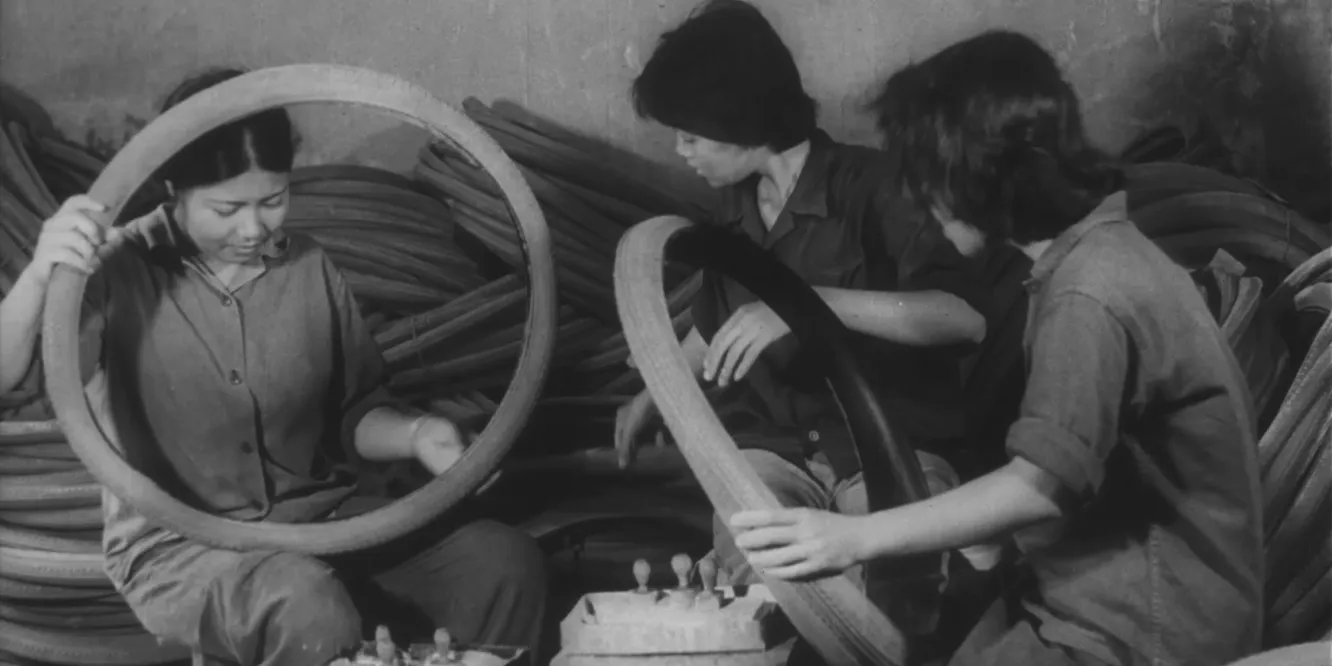A Glimpse into Vietnam’s Cycling Culture
Visual storytelling offers a unique path to experiencing Vietnam’s rich cycling history, and one such remarkable portrayal comes from “Dust and Metal,” a film directed by Esther Johnson. This cinematic piece takes audiences on an archival journey, presenting evocative footage of the enduring cycling culture that weaves through Vietnam’s urban and rural landscapes.
The film was highlighted in a Vietnamese Cultural Exchange Event, showing how this medium serves as a cultural bridge. Alongside the film, Johnson also introduced a complementary story titled “The Story of Kindness or How to Behave,” enriched by insights from film director Văn Thuỷ Trần, further connecting viewers to Vietnam’s social fabric through the lens of cycling.
The Art of Cycling Footage in Vietnam
“Dust and Metal” goes beyond mere visuals, embedding historical and social narratives that have shaped the country’s cycling traditions. The footage carries an authenticity that captures daily life, communal ties, and the evolution of transportation modes in Vietnam, where bicycles have long been a vital part of life.
The screenings, including the recent sessions at cultural galleries, have made the film accessible to a broader audience, fostering appreciation for Vietnam’s visual and cultural identity through cycling.
Historical Context of Cycling in Vietnam
The roots of cycling in Vietnam run deep, intertwined with the nation’s geography, economy, and social evolution. Since the early 20th century, bicycles have been more than just a mode of transport—they symbolized accessibility, freedom, and resilience in a landscape marked by complex history and continual change.
Rural and urban communities alike adapted cycling to meet daily needs, from carrying goods in bustling markets to navigating narrow village pathways. Over decades, biking expanded into recreational and sporting activities, reflecting global trends while maintaining local distinctiveness.
Cycle Tourism: A Global and Regional Perspective
On the broader spectrum, cycling tourism has emerged as a prominent travel segment worldwide. It offers opportunities for sustainable travel, emphasizing low carbon footprints and close contact with natural and cultural environments. Destinations across Asia, including Vietnam, increasingly embrace cycling routes as both tourist attractions and eco-friendly transport networks.
Unlike conventional tourism, cycling tours invite slower, more immersive exploration—qualities that appeal to travelers who seek authenticity and local connection. Vietnam’s scenic rural routes, vibrant street life, and historical landmarks offer perfect terrain for this mode of travel, encouraging a fusion of adventure and cultural discovery.
| Era | Significance of Cycling | Impacts on Society and Tourism |
|---|---|---|
| Early 1900s | Primary transportation in rural and urban areas | Enhanced mobility; foundation for modern cycling culture |
| Mid-20th Century | Adaption during economic and social shifts | Symbol of resilience; rise of bicycle repair and markets |
| Present Day | Leisure, sport, and tourism | Growth of cycle tourism; cultural and historical storytelling through film |
Future Outlook: Cycling’s Role in Sustainable Tourism
Cycling aligns perfectly with the ethos of sustainable, slow, and experiential tourism. Countries invested in promoting cycle routes see benefits in local economies, community involvement, and environmental preservation. Vietnam’s integration of its cycling heritage into cultural exchanges and film points to an increasing awareness of tourism’s potential to cultivate genuine connections.
A growing number of destinations establish waymarked routes, bike-friendly infrastructure, and guided tours tailored to cycling enthusiasts. This strategy fosters new tourism markets while respecting environmental limits and cultural authenticity.
How Cycling Culture Influences Boating and Sailing Activities
At first glance, cycling and boating may seem worlds apart. However, both embody the spirit of freedom and adventure on open water or under open skies. Travelers who enjoy one often appreciate the other, especially in regions with rich natural landscapes and diverse transport options.
For marine tourism destinations in Vietnam or neighboring coastal areas where sailing is prevalent, cycling can act as an eco-friendly complementary activity. Visitors arriving or departing from marinas often explore nearby beaches, coves, and villages by bike, enhancing their overall experience. Such interplay between land and sea activities broadens people’s connection to the destination’s ecosystem.
Integrating Cycling and Sailing Experiences
- Planning boating routes that connect with scenic cycle paths
- Providing bike rentals at marina hubs
- Promoting combined tour packages featuring sailing and cycling exploration
- Encouraging sustainable tourism practices that reduce reliance on motorized transport
결론
The archival cinematic work “Dust and Metal” captures an essential slice of Vietnam’s living history: the cycling culture that continues to shape everyday life and tourism narratives. This visual journey highlights the deep-rooted tradition of bicycles in Vietnam and presents a compelling case for cycling as both a cultural expression and a sustainable tourism strategy.
As the world increasingly seeks authentic and environmentally conscious travel options, Vietnam’s cycling heritage combined with its captivating landscapes makes it an appealing destination for adventure seekers — be they cyclists or sailors. Whether traversing the bustling streets or exploring tranquil coastlines, travelers find that both cycling and boating enrich their experience in meaningful ways.
For those inspired to explore Vietnam’s waters and shores, GetBoat.com offers an international marketplace for renting sailing boats and yachts, catering to varied tastes and budgets. By combining sailing with activities like cycling, visitors unlock diverse opportunities to enjoy the gulf, beaches, and marinas that define this vibrant region.

 Exploring Vietnam’s Cycling Heritage through Iconic Footage">
Exploring Vietnam’s Cycling Heritage through Iconic Footage">
